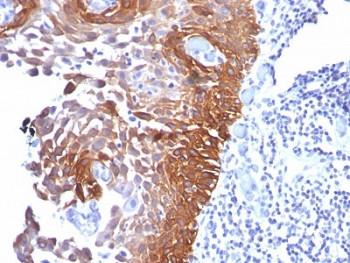Cookie preferences
This website uses cookies, which are necessary for the technical operation of the website and are always set. Other cookies, which increase the comfort when using this website, are used for direct advertising or to facilitate interaction with other websites and social networks, are only set with your consent.
Configuration
Technically required
These cookies are necessary for the basic functions of the shop.
"Allow all cookies" cookie
"Decline all cookies" cookie
CSRF token
Cookie preferences
Currency change
Customer-specific caching
FACT-Finder tracking
Individual prices
Selected shop
Session
Comfort functions
These cookies are used to make the shopping experience even more appealing, for example for the recognition of the visitor.
Note
Show the facebook fanpage in the right blod sidebar
Statistics & Tracking
Affiliate program
Conversion and usertracking via Google Tag Manager
Track device being used
| Item number | Size | Datasheet | Manual | SDS | Delivery time | Quantity | Price |
|---|---|---|---|---|---|---|---|
| NSJ-V2176SAF-100UG | 100 µg | - | - |
3 - 10 business days* |
752.00€
|
If you have any questions, please use our Contact Form.
You can also order by e-mail: info@biomol.com
Larger quantity required? Request bulk
You can also order by e-mail: info@biomol.com
Larger quantity required? Request bulk
1 mg/ml in 1X PBS, BSA free, sodium azide free. Cytokeratin 17 (CK17, Keratin 17) is a member of... more
Product information "Anti-Cytokeratin 17, clone E3"
1 mg/ml in 1X PBS, BSA free, sodium azide free. Cytokeratin 17 (CK17, Keratin 17) is a member of the Cytokeratin subfamily of intermediate filament proteins (IFP's). It is unique in that it is normally expressed in the basal cells of complex epithelia but not in stratified or simple epithelia. Cytokeratin 17 is expressed in the nail bed, hair follicle, sebaceous glands and other epidermal appendages. Antibody to cytokeratin 17 is an excellent tool to distinguish myoepithelial cells from luminal epithelium of various glands such as mammary, sweat and salivary. It is expressed in epithelial cells of various origins, such as bronchial epithelial cells and skin appendages. It may be considered as "epithelial stem cell" marker because cytokeratin 17 antibody marks basal cell differentiation. Cytokeratin 17 can be useful when included in a panel of antibodies against TTF-1, napsin A, CK5&6, p63, and SOX-2 for diagnostic differentiation between lung adenocarcinoma (LADC) and lung squamous cell carcinoma (SCLC), especially for poorly-differentiated lung carcinoma. Cytokeratin 17 is expressed in SCLC much higher than in LADC. In breast carcinomas, approximately 20% of patients show no expression of ER, PR and Her2, which are defined as triple negative tumor. Eighty-five percent of the triple negative breast carcinomas immunoreact with basal cytokeratins including cytokeratin 17 antibody. Also important is that cases of triple negative breast carcinoma with expression of keratin 17 show an aggressive clinical course. The histologic differentiation of ampullary cancer, intestinal vs. pancreatobiliary, is very important for treatment. Usually antibody to cytokeratin 17 and MUC1 immunoreactivity represents pancreatobiliary subtype whereas antibody to MUC2 and CDX2 positivity defines intestinal subtype. Protein function: Type I keratin involved in the formation and maintenance of various skin appendages, specifically in determining shape and orientation of hair. Required for the correct growth of hair follicles, in particular for the persistence of the anagen (growth) state. Modulates the function of TNF-alpha in the specific context of hair cycling. Regulates protein synthesis and epithelial cell growth through binding to the adapter protein SFN and by stimulating Akt/mTOR pathway. Involved in tissue repair. May be a marker of basal cell differentiation in complex epithelia and therefore indicative of a certain type of epithelial "stem cells". Acts as a promoter of epithelial proliferation by acting a regulator of immune response in skin: promotes Th1/Th17-dominated immune environment contributing to the development of basaloid skin tumors. May act as an autoantigen in the immunopathogenesis of psoriasis, with certain peptide regions being a major target for autoreactive T-cells and hence causing their proliferation. [The UniProt Consortium]
| Keywords: | Anti-K17, Anti-39.1, Anti-CK-17, Anti-KRT17, Anti-Keratin-17, Anti-Cytokeratin-17, Anti-Keratin, type I cytoskeletal 17, Cytokeratin 17 Antibody |
| Supplier: | NSJ Bioreagents |
| Supplier-Nr: | V2176SAF |
Properties
| Application: | WB, FC, IHC (paraffin), IF |
| Antibody Type: | Monoclonal |
| Clone: | E3 |
| Conjugate: | No |
| Host: | Mouse |
| Species reactivity: | human, rat, bovine, goat, swine |
| Immunogen: | The cytoskeletal fraction of rat colon epithelium |
| Format: | Purified |
Database Information
| KEGG ID : | K07604 | Matching products |
| UniProt ID : | Q04695 | Matching products |
| Gene ID | GeneID 3872 | Matching products |
Handling & Safety
| Storage: | +4°C |
| Shipping: | +4°C (International: +4°C) |
Caution
Our products are for laboratory research use only: Not for administration to humans!
Our products are for laboratory research use only: Not for administration to humans!
Information about the product reference will follow.
more
You will get a certificate here
Viewed















